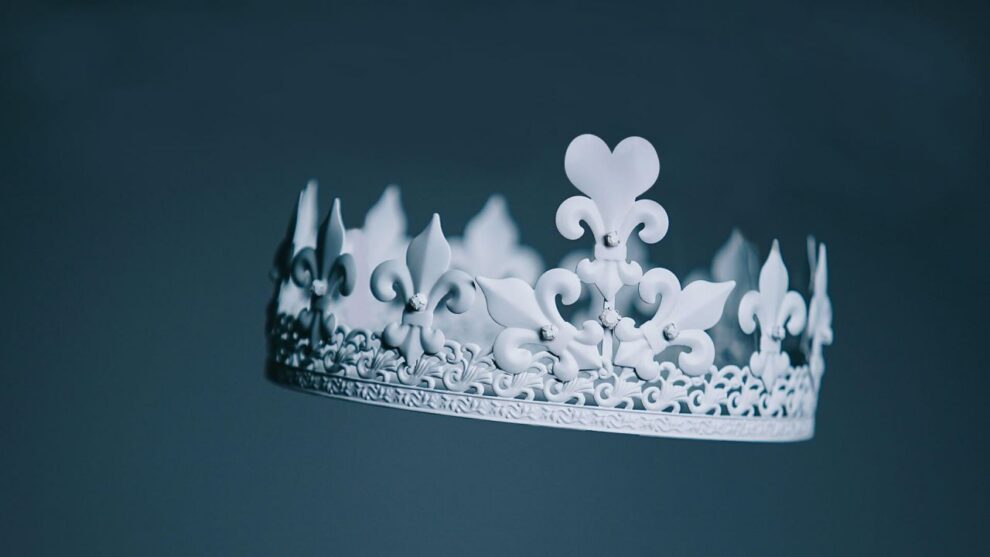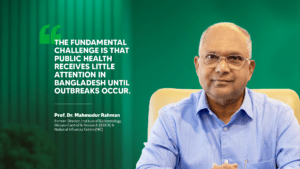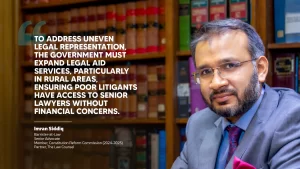Throughout the centuries, old traditions have slowly faded away to make room for new ones – and royal traditions and customs were no exception to this rule. The following text serves as an example of how the British monarchy has adapted to changing times.
King Henry VIII
Henry the Eighth was the first British monarch to have been married more than once. He got married six times, in total. His first marriage was with Catherine of Aragorn, who was his elder brother’s widow. Even though they were married for 25 long years, their marriage was devoid of love. During their time together, Henry conducted an affair with Mary Boleyn, one of Catherine’s ladies-in-waiting. As Henry grew more and more exasperated with his wife’s inability to produce a male heir, his affections started to grow for another woman, Anne Boleyn, his previous mistress’s sister. When it became obvious that Catherine, who was nearing the age of 40, would not be able to produce any more children (she only gave birth to a girl, Mary I), Henry started to look for ways in which he could annul his first marriage and be free to marry Anne. To do so, Henry named himself head of the church as well as state, and by doing so made Anne Boleyn the Queen Consort. Unfortunately, Henry’s second marriage had a worse ending compared to his first, with Anne Boleyn being executed upon being falsely charged with adultery. In truth, she was executed because of her inability to produce any children other than one girl, Elizabeth, and because Henry the Eighth had already developed an infatuation with another woman by then with the name of Jane Seymour. The couple was engaged the day after Anne’s beheading and were married within the next ten days.
After two unsuccessful marriages, the King finally got what he wanted – a male heir. Jane gave birth to Edward VI but died shortly after due to an infection. However, it didn’t take very long for Henry to recover from the shock. Soon afterwards, he married Anne of Cleves – but he got bored with her quickly and wanted to annul the marriage. Anne, fearing to end up with a fate similar to Anne Boleyn, easily relented to the annulment, claiming that the marriage hadn’t been consummated in the first place.
Catherine Howard, a girl of seventeen, was Henry’s next conquest – he was delighted with his new queen. To Henry’s dismay, that love didn’t last very long either as he soon found out that Catherine had been having an affair behind his back. Henry’s last wife was a wealthy widow named Catherine Parr, who preached to the King about religion and was the person who helped him reconcile with his two daughters, Mary and Elizabeth, to bring them back in the line of succession, right after Prince Edward.

Queen Elizabeth I
Elizabeth I took lessons from her father’s reign and chose to remain unmarried and childless for the 44 years that she reigned as a monarch. However, she did receive many proposals – all of which she refused for the fear of losing her throne. Out of all her suitors, Robert Dudley, who was her childhood friend, was her favorite. She was in love with Dudley, and for the longest time had entertained the idea of marrying him. That, however, never came to pass due to political issues – the English court would never have accepted a commoner as the Queen’s betrothed.
In 1564, Elizabeth raised Dudley to the peerage as the Earl of Leicester. Years after the loss of his first wife, when he finally lost all hope of ever marrying Elizabeth, he took Lettice Knollys to be his wife and when this news reached the Queen, she did little to hide her displeasure. Despite everything, Dudley remained one of Elizabeth’s closest companions until the day he died. Even though Elizabeth never got to live her life with her true love, the lessons she took from her father’s actions worked in her favor, making her reign one of the most memorable in the British monarchy.

Queen Victoria
Back in a time when women had little to no autonomy, Queen Victoria broke all norms and refused to marry until she found love. She had fancied Lord Melbourne for some time, who was the British Prime-minister during the beginning of her reign – but that never led to anything because of the shocking age gap between the two, and of course, other social barriers. Victoria’s mother was insistent upon her marrying her cousin, Prince Albert, but Victoria stood her ground – she would not marry until she found love. However, to keep her mother happy, she invited the princes of Coburg to England. Upon first meeting Prince Albert of Saxe-Coburg and Gotha, Victoria found him to be not at all likable, but Albert slowly grew on her. Being the sovereign ruler of a nation, it was Victoria’s place to propose marriage to Albert, which she eventually did in 1840. The couple consequently got married and went on to have nine children.
Queen Victoria was one of the few monarchs to have been able to marry for love. When Prince Albert passed away in the year 1861, Victoria was inconsolable. She had lost more than a husband – she had lost the love of her life. In the later years of her life, she did seek out the companionship of two of her servants, John Brown and Abdul Karim – whether these relationships were intimate are yet to be proven. Nonetheless, it is pretty clear from Victoria’s mentions of these individuals in her diary that they were very close to the Queen and that she valued their presence in her life very much.

King Edward VIII
Edward VIII took the throne after his father’s death in early 1936, but his time as King was very short-lived. Within one month of his reign, he had proposed to Wallis Simpson (a one-time divorcée who was seeking a divorce from her second husband), and by doing so had caused a constitutional crisis. At the time of this incident, the Church of England severely disapproved of remarriage after divorce while ex-spouses were alive. The then Prime Minister of England, Stanley Baldwin, shared the church’s view, calling the possibility of a divorced woman to be married to the reigning monarch of England to be politically and socially unacceptable. When it became apparent that he could not marry Willis while staying on the throne, Edward abdicated. Thus, Edward VIII’s short reign of 326 days ended, with him marrying Willis and his throne being passed onto his brother George VI.

Queen Elizabeth II
The longest-reigning monarch in history had something of a fairy-tale love story. Thirteen year-old Elizabeth met Phillip during one of her visits to the Royal Naval College in Dartmouth. For her, it was love at first sight. They kept in contact through correspondence, and by Christmas of 1943, Phillip was a guest of honor at the royal family’s Christmas celebration at Windsor Castle. However, they too had to overcome their share of obstacles to be united. Elizabeth’s father, King George VI, had his doubts about Phillip, who lacked financial independence, and was considered to be a little rough around the edges.
Even though Phillip was a descendant of royal blood, the fact that his father had abandoned the family to live with a mistress, and that his mother was a committed schizophrenia patient, did plant seeds of doubt in the minds of Elizabeth’s family members. Nevertheless, by 1947, Phillip had George’s permission to propose to Elizabeth, which he did with a ring he designed himself. Additionally, he renounced his birth titles, becoming Philip Mountbatten. The night before the wedding, George bestowed Philip with the titles of Duke of Edinburgh, Earl of Merioneth and Baron Greenwich. Together, they had four children, and even after 70 years of marriage, they’re still going strong.

Prince Charles
Everyone knows this story – how the Prince of Wales married Lady Diana Spencer in the most lavish wedding of the 20th century, but not many people know about the events that led up to it. Before marrying Diana, Prince Charles was romantically linked with her sister, Sarah. Diana, in her words, had admitted that she didn’t quite understand why Charles had chosen to marry her – they hardly knew each other, weren’t compatible at all and met a total of 13 times before tying the knot. Rumors say that Charles’ rash decisions might have been a consequence of him realizing that he could never be united with his true love, Camilla, who was married to a British army officer, Andrew Parker Bowles back then.
Prince Charles and Diana had two children, William and Harry, and were married for 15 years, during which time the Prince of Wales continued his illicit affair with Camilla and this eventually led the royal couple to get a divorce. Even though Diana was cut off from the royal family, she remained in the limelight, often getting hounded by paparazzi. The people’s princess met a tragic end on a night in August of 1997, when her car got into an accident in Paris. Prince Charles, who is next in the line of succession, finally married his life-long love, Camilla, in 2005, thereby reversing the unwritten rule that forbade marriage between future monarchs and, for lack of a better word, commoners.

Prince William and Prince Harry
Both the Duke of Cambridge and Sussex got to reap the benefits of the change in the royal customs that were triggered by their parents’ mistakes. Prince William and Harry were allowed to do something their ancestors were strictly denied – they were allowed to marry for love. Prince William found his life-partner in Kate Middleton, who he met in University. After 10 long years of on-and-off relationship, the couple tied the knot in 2011, and are now happily married with their three children.
Prince Harry took things one step further. He fell in love with Meghan Markle, a mixed-race, American actress who is also a one-time divorcee. After dating for a year, the couple got married in 2017, and by doing so, shattered all the stigmas and prejudices surrounding royal marriage customs. Recently, Markle gave birth to their first son and named him Archie Mountbatten-Windsor.

The purpose of this article was to demonstrate the gradual change that has occurred through the passage of time. We only learn from the mistakes of the past – and that is clearly evident from the sequence of royal love stories narrated above. The message that The Prestige wanted to portray through this long text is that in the end of it all, love perseveres.






